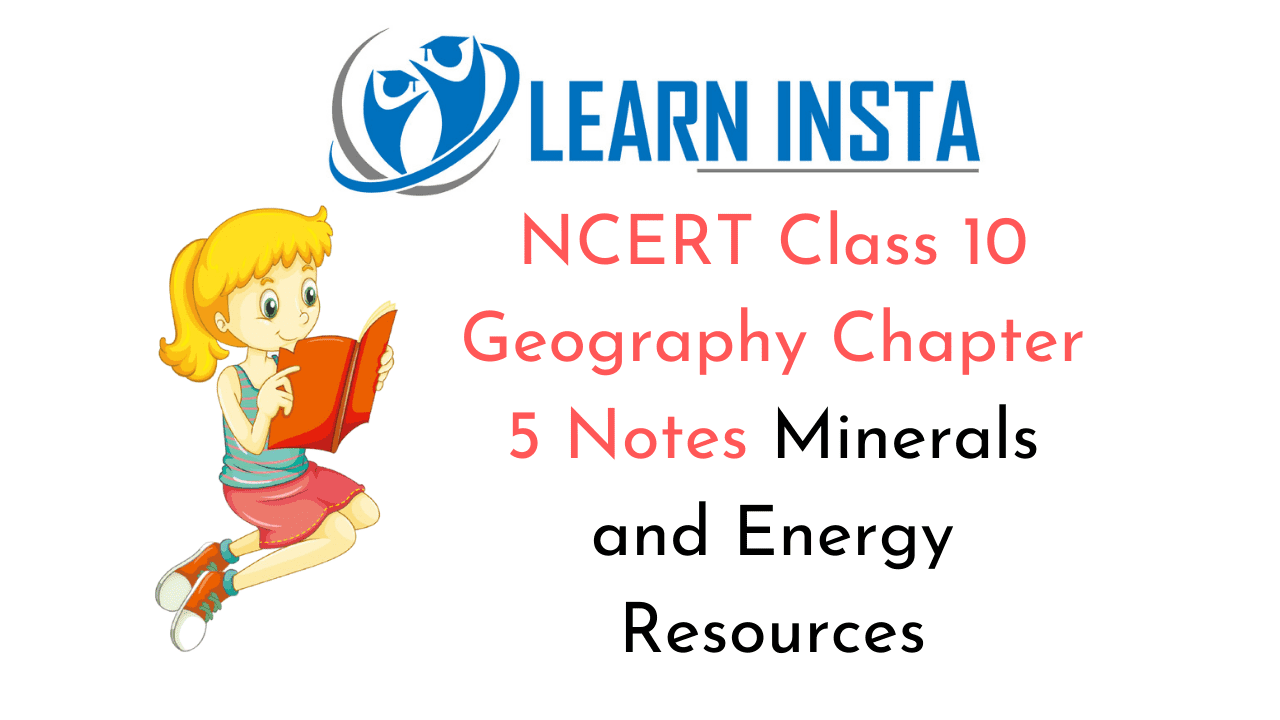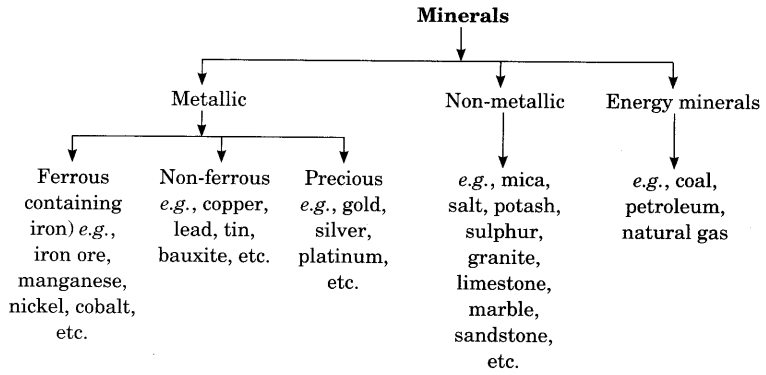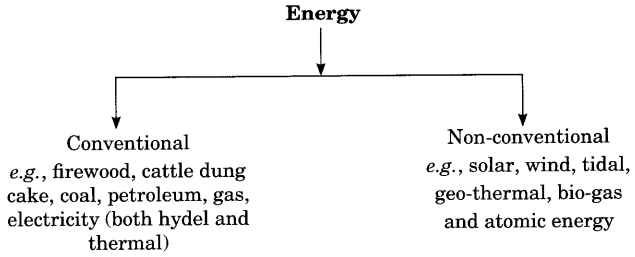 On this page, you will find NCERT Class 10 Geography Chapter 5 Notes Pdf free download. CBSE Class 10 Social Science Notes Geography Chapter 5 SST Minerals and Energy Resources will seemingly, help them to revise the important concepts in less time.
On this page, you will find NCERT Class 10 Geography Chapter 5 Notes Pdf free download. CBSE Class 10 Social Science Notes Geography Chapter 5 SST Minerals and Energy Resources will seemingly, help them to revise the important concepts in less time.
Minerals and Energy Resources Class 10 Notes Social Science Geography Chapter 5
CBSE Class 10 Geography Chapter 5 Notes Understanding the Lesson
1. Minerals are important for our life. Life processes cannot occur without them. Almost everything we use is made of minerals.
2. Geologists define mineral as a ‘homogeneous, naturally occurring substance with a definable internal structure’. Minerals are found in varied forms in nature, ranging from the hardest diamond to the softest talc.
3. Minerals are usually found in ores which are accumulations of minerals with other elements. The mineral content of the ore must be in sufficient concentration to make its extraction commercially viable.
4. Minerals occur in various forms. In igneous and metamorphic rocks, minerals may occur in the cracks, crevices, faults or joints. In sedimentary rocks, a number of minerals occur in beds or layers. Another mode of formation involves the decomposition of surface rocks, and the removal of soluble constituents, leaving a residual mass of weathered material containing ores. Some minerals may occur as alluvial deposits in sands of valley floors and the base of hills. The ocean waters contain vast quantities of minerals.
5. Minerals are classified as following:

6. Iron ore is the basic mineral and the backbone of industrial development. India is rich in good quality iron ores. Magnetite is the finest iron ore and is valuable in the electrical industry. There are four major iron ore belts in India – Odisha-Jharkhand belt, Durg-Bastar-Chandrapur belt, Bellary- Chitradurga-Chikkamagaluru-Tumakuru belt and Maharashtra-Goa belt.
7. India’s reserves and production of non-ferrous minerals is not very satisfactory. However, these minerals play a vital role in a number of metallurgical, engineering and electrical industries.
8. Mica is a non-metallic mineral which is found in the northern edge of the Chotanagpur plateau. Koderma-Gaya-Hazaribagh belt of Jharkhand is the leading producer.
9. Limestone is a rock mineral. It is the basic raw material for the cement industry and is essential for smelting iron ore in the blast furnace.
10. Mineral resources are finite and non-renewable. Hence, their conservation is important. Recycling of metals, using scrap metals and other substitutes are steps in conserving our mineral resources for the future.
Energy Resources
11. We are heavily dependent on energy resources. We need it for cooking, lighting, heating, propelling vehicles and for driving machinery in industries. We can classify energy resources in the following ways:

12. Coal provides a substantial part of the nation’s energy needs. It is used for power generation, to supply energy to industry as well as for domestic needs. There are four types of coal-peat, lignite, bituminous and anthracite. Bituminous coal is commercially valuable. Anthracite is the highest quality hard coal
13. Petroleum, also known as mineral oil is the next major energy source in India after coal. It provides fuel for heat and lighting, lubricants for machinery and raw materials for a number of manufacturing industries.
14. Natural gas is used as a source of energy as well as an industrial raw material in the petrochemical industry. It is considered an environment-friendly fuel because of low carbon dioxide emissions.
15. We are heavily dependent on electricity. It is generated mainly in two ways – by running water which drives hydro turbines to generate hydroelectricity, and by burning other fuels such as coal, petroleum and natural gas to drive turbines to produce thermal power.
16. Solar energy, wind, tide, biomass and energy from waste material are renewable and therefore, they should be used more and more. India has the largest programmes for these renewable energies resources.
17. Energy is the basic requirement for economic development of a country. Since its consumption in all forms has been steadily rising all over the country, so there is an urgent need to develop a sustainable path of energy development.
18. India is one of the least energy-efficient countries in the world. So, it is important for us to adopt a cautious approach for the judicious use of our limited energy resources.
Minerals and Energy Resources Class 10 CBSE Notes Important Terms
Mineral: A homogenous, naturally occurring substance with a definable internal structure.
Ferrous mineral: Minerals having iron contents.
Non-ferrous mineral: Minerals having no iron contents.
Mineral ore: The raw metal extracted from the earth mixed with soil and other impurities.
Mining: An economic activity of extracting minerals from the earth.
Metallic mineral: Minerals having metal contents.
Ore: An accumulation of any mineral mixed with other elements.
Hydroelectricity: Electricity generated by running water.
Thermal electricity: Electricity generated by burning other fuels such as coal, petroleum and natural gas.
Biogas: A mixture of different gases produced by the breakdown of organic matter in the absence of oxygen.
Geologist: A scientist who studies origin and structure of earth.
Fossil fuel: Buried combustible geologic deposits of organic materials, formed from decayed plants and animals that have been converted to crude oil, coal, natural gas, or heavy oils by exposure of heat and pressure in the earth’s crust over hundreds of millions of years.
Lignite: Low-grade brown coal.
Anthracite: The highest quality hard coal.
Geothermal energy: The heat and electricity produced by using the heat from the interior of the earth.